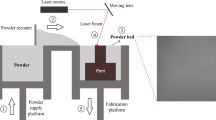Abstract
The cross-section profile is a key signal for evaluating hot-rolled strip quality, and ignoring its defects can easily lead to a final failure. The characteristics of complex curve, significant irregular fluctuation and imperfect sample data make it a challenge of recognizing cross-section defects, and current industrial judgment methods rely excessively on human decision making. A novel stacked denoising autoencoders (SDAE) model optimized with support vector machine (SVM) theory was proposed for the recognition of cross-section defects. Firstly, interpolation filtering and principal component analysis were employed to linearly reduce the data dimensionality of the profile curve. Secondly, the deep learning algorithm SDAE was used layer by layer for greedy unsupervised feature learning, and its final layer of back-propagation neural network was replaced by SVM for supervised learning of the final features, and the final model SDAE_SVM was obtained by further optimizing the entire network parameters via error back-propagation. Finally, the curve mirroring and combination stitching methods were used as data augmentation for the training set, which dealt with the problem of sample imbalance in the original data set, and the accuracy of cross-section defect prediction was further improved. The approach was applied in a 1780-mm hot rolling line of a steel mill to achieve the automatic diagnosis and classification of defects in cross-section profile of hot-rolled strip, which helps to reduce flatness quality concerns in downstream processes.











Similar content being viewed by others
References
Y.H. Zuo, China Metallurgy 23 (2013) No. 7, 37–39.
Z.G. Zhang, Xinjiang Iron and Steel 103 (2007) No. 3, 28–30.
J.H. Li, X.D. Qi, J.C. Lian, X.D. Liu, Z.L. Jiang, Iron and Steel 39 (2004) No. 6, 47–50.
H. Liu, T.Q. Gu, M.H. Miu, J. Iron Steel Res. 24 (2012) No. 2, 59–62.
Y.D. Wang, B. Yu, H.M. Liu, Y. Peng, Iron and Steel 46 (2011) No. 9, 50–54.
H.B. Li, J. Zhang, J.G. Cao, S.S. Zhang, Z.M. Wang, Journal of University of Science and Technology Beijing 31 (2009) 487–491.
M. Yan, F.J. Duan, Chinese Journal of Sensors and Actuators 19 (2009) 724–727+729.
X.H. Li, Y.W. Qi, Petroleum Geology and Oilfield Development in Daqing 25 (2006) No. 5, 116–118+126.
Q.S. Guo, Y. L. Huang, L.P. Zhang, Geomatics and Information Science of Wuhan University 33 (2008) 596–599.
I. Siregar, Y. Niu, P. Mostaghimi, R.T. Armstrong, Int. J. Coal Geol. 181 (2017) 11–22.
J. Liu, W. Yao, J. Wen, H. He, X. Zheng, J. Appl. Math. 2014 (2014) 1–9.
E.J. Candès, J. Marta. Sanz. Solé 17 (2006) 1433–1452.
J. Wright, A.Y. Yang, A. Ganesh, IEEE Trans. Pattern. Anal. 31 (2009) 210.
L.L. Guo, S.F. Ding, Computer Science 42 (2015) No. 5, 28–33.
T. Wang, X. Xu, F. Shen, Y. Yang, IEEE/CAA J. Autom. Sin. 8 (2021) 1296–1307.
H. Li, G. Hu, J. Li, M. Zhou, IEEE Trans. Autom. Sci. Eng. 19 (2022) 1109–1119.
A. Krizhevsky, I. Sutskever, G.E. Hinton, Association for computing machinery, New York, USA, 2017.
T. Mikolov, M. Karafiát, L. Burget, J. Cernock, S. Khudanpur, in: Conference of the International Speech Communication Association, Makuhari, Chiba, Japan, 2010, pp. 1045–1048.
R. Salakhutdinov, G. Hinton, Neural Comput. 24 (2012) 1967–2006.
E. Principi, D. Rossetti, S. Squartini, F. Piazza, IEEE/CAA J. Autom. Sin. 6 (2019) 441–451.
X. Hou, K. Wang, C. Zhong, Z. Wei, IEEE/CAA J. Autom. Sin. 8 (2021) 1015–1024.
P. Vincent, H. Larochelle, Y. Bengio, P.A. Manzagol, in: Proceedings of the 25th International conference on Machine learning, Helsinki, Finland, 2008, pp. 1096–1103.
P. Vincent, H. Larochelle, I. Lajoie, Y. Bengio, P. Manzagol, J. Mach. Learn. Res. 11 (2010) 3371–3408.
D. Erhan, A. Courville, Y. Bengio, PA. Manzagol, P. Vincent, S. Bengio, J. Mach. Learn. Res. 11 (2010) 625–660.
P. Ran, L. Wang, X. Li, Industrial Control Computer 29 (2016) No. 9, 100–101+104.
L.H. Wang, Y.Y. Xie, Y.H. Zhang, X.P. Zhao, Z.X. Zhou, Journal of Xi'an Jiaotong University 51 (2017) No. 10, 128–134.
H. Zhong, C. Miao, Z. Shen, Y. Feng, Neurocomputing 128 (2014) 285–295.
P. Zhang, S. Shu, M. Zhou, IEEE/CAA J. Autom. Sin. 5 (2018) 445–456.
P. Zhang, S. Shu, M. Zhou, IEEE Trans. Ind. Inform. 17 (2021) 20–30.
K. Veer, R. Vig, Biomedizinische Technol. 63 (2018) 191–196.
S. Mallah, B. Delsouz Khaki, N. Davatgar, T. Scholten, A. Amirian-Chakan, M. Emadi, R. Kerry, A.H. Mosavi, R. Taghizadeh-Mehrjardi, Agronomy 12 (2022) 2613.
Acknowledgements
This work was supported by the National Natural Science Foundation of China (No. 52004029), the Joint Doctoral Program of China Scholarship Council (CSC) (202006460073), and Liuzhou Science and Technology Plan Project, China (2021AAD0102).
Author information
Authors and Affiliations
Corresponding author
Ethics declarations
Conflict of interest
The authors have no competing interests to declare that are relevant to the content of this article.
Rights and permissions
Springer Nature or its licensor (e.g. a society or other partner) holds exclusive rights to this article under a publishing agreement with the author(s) or other rightsholder(s); author self-archiving of the accepted manuscript version of this article is solely governed by the terms of such publishing agreement and applicable law.
About this article
Cite this article
Li, Tl., Sun, Wq., He, Ar. et al. A defect recognition model for cross-section profile of hot-rolled strip based on deep learning. J. Iron Steel Res. Int. 30, 2436–2447 (2023). https://doi.org/10.1007/s42243-023-01104-2
Received:
Revised:
Accepted:
Published:
Issue Date:
DOI: https://doi.org/10.1007/s42243-023-01104-2




